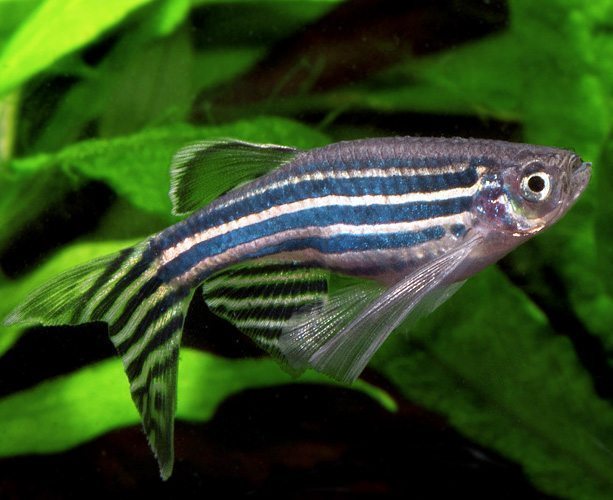

The rarer Golden Danio Zebra has a gold ground color and silver-white stripes.Natural albino zebra danios lack pigmentation and are whitish to pinkish in color.Naturally occurring mutations, artificial selection by breeders, and the increasing use of genetic modification have given rise to several unique morphs, including: While the wild-type zebrafish is a popular choice, there are many other interesting varieties available in the aquarium and research laboratory trade. They also have a prominent genital papilla, or bent tube, just in front of their anal fin. Silvery-white females have a rounder, plump body with a white belly and silver stripes instead of gold.

Slender zebra danio males are torpedo-shaped and often have subtle gold stripes between the zebra stripes on their bodies. Sexual dimorphism also known as gender differences Its natural background color is usually a subtle silver to gold stripe. Their bodies are spindle-shaped (fusiform) and their mouths are upturned. The zebrafish is known for the five iridescent dark blue stripes that run down its body on both sides from its head to the tip of its caudal (tail) fin. Pond fish can grow larger than danios kept in aquariums. How big are zebra danios? They are usually sold as juveniles about 0.5 to 1 inch long, with the size of a mature zebra danio usually maxing out at about 1.5 to 2 inches. They share around 70% of their genetic material with humans, making them ideal for studying diseases such as diabetes and muscular dystrophy, and for use in developing new drugs and treatments.Their easy breeding habits and large, transparent eggs make them ideal for laboratory experiments.His DNA was fully sequenced in 2001 and continues to be studied in more than 600 laboratories around the world.This extensive research has led to the zebrafish being one of the best understood species on the planet: Initially dismissed as a worthless fish, they have since become a model species for scientists studying everything from the genetics of neural development to cancer, and have even been sent into space! The zebrafish was first described in India in 1822 by the Scottish physician and explorer Francis Hamilton. Other popular aquarium varieties include Pearl Danio (Danio albolineatus), Celestial Danio Zebra (Danio margaritatus), and Emerald Dwarf Rasbora (Danio erythromicron). The zebrafish, as it is also called, is only one of 23 currently recognized danio species. “Danio” derives from the Bengali name Dhani, which means “of the rice fields”.Usually found in shallow water shaded by aquatic vegetation or overhanging with a substratum filled with sandy or silty pebbles.



 0 kommentar(er)
0 kommentar(er)
